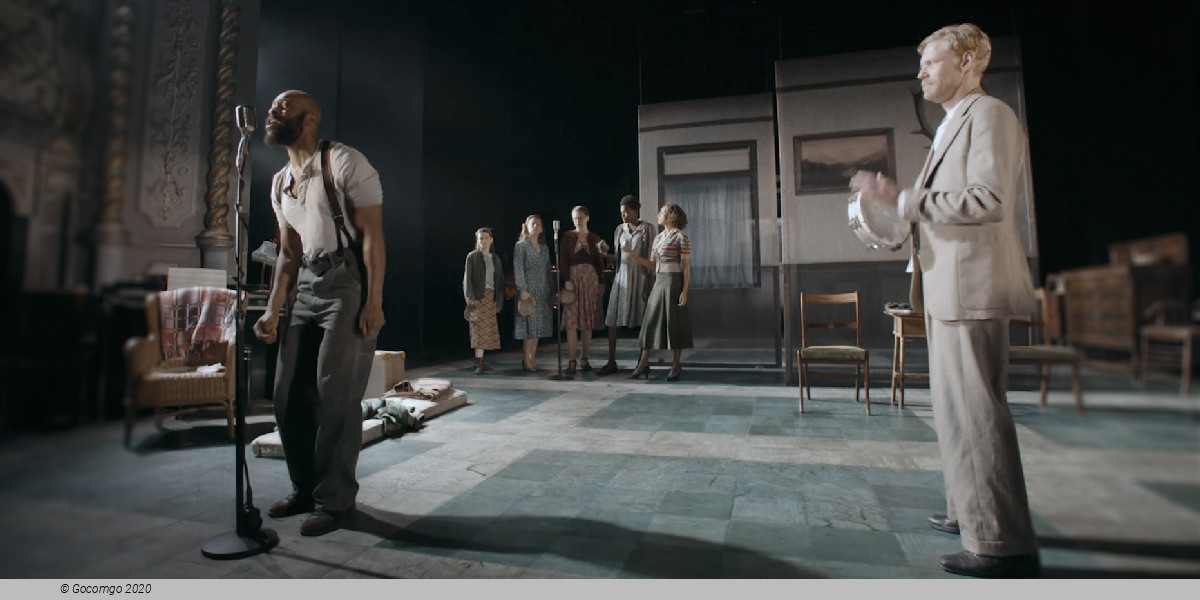The Old Vic (London, Great Britain)
The Old Vic

The Old Vic is a 1,000-seat, not-for-profit producing theatre in Waterloo, London, England. Established in 1818 as the Royal Coburg Theatre, and renamed in 1833 the Royal Victoria Theatre. In 1871 it was rebuilt and reopened as the Royal Victoria Palace. It was taken over by Emma Cons in 1880 and formally named the Royal Victoria Hall, although by that time it was already known as the "Old Vic". In 1898, a niece of Cons, Lilian Baylis, assumed management and began a series of Shakespeare productions in 1914. The building was damaged in 1940 during air raids and it became a Grade II* listed building in 1951 after it reopened.
The Old Vic is the crucible of many of the performing arts companies and theatres in London today. It was the name of a repertory company that was based at the theatre and formed (along with the Chichester Festival Theatre) the core of the National Theatre of Great Britain on its formation in 1963, under Laurence Olivier. The National Theatre remained at the Old Vic until new premises were constructed on the South Bank, opening in 1976. The Old Vic then became the home of Prospect Theatre Company, at that time a highly successful touring company which staged such acclaimed productions as Derek Jacobi's Hamlet. However, with the withdrawal of funding for the company by the Arts Council of Great Britain in 1980 for breaching its touring obligations, Prospect disbanded in 1981. The theatre underwent complete refurbishment in 1985. In 2003, Kevin Spacey was appointed artistic director, which received considerable media attention. Spacey served as artistic director until 2015. In 2015, Matthew Warchus succeeded Spacey as artistic director.
Origins
The theatre was founded in 1818 by James King and Daniel Dunn (formerly managers of the Surrey Theatre in Bermondsey), and John Thomas Serres, then the marine painter to the King. Serres managed to secure the formal patronage of Princess Charlotte and her husband Prince Leopold of Saxe-Coburg, and named the theatre the Royal Coburg Theatre. The theatre was a "minor" theatre (as opposed to one of the two patent theatres) and was thus technically forbidden to show serious drama. Nevertheless, when the theatre passed to George Bolwell Davidge in 1824 he succeeded in bringing legendary actor Edmund Kean south of the river to play six Shakespeare plays in six nights. The theatre's role in bringing high art to the masses was confirmed when Kean addressed the audience during his curtain call saying "I have never acted to such a set of ignorant, unmitigated brutes as I see before me." More popular staples in the repertoire were "sensational and violent" melodramas demonstrating the evils of drink, "churned out by the house dramatist", confirmed teetotaller Douglas Jerrold.
When Davidge left to take over the Surrey Theatre in 1833, the theatre was bought by Daniel Egerton and William Abbot, who tried to capitalise on the abolition of the legal distinction between patent and minor theatres, enacted in Parliament earlier that year. On 1 July 1833, the theatre was renamed the Royal Victoria Theatre, under the "protection and patronage" of Victoria, Duchess of Kent, mother to Princess Victoria, the 14-year-old heir presumptive to the British throne. The duchess and the princess visited only once, on 28 November of that year, but enjoyed the performance, of light opera and dance, in the "pretty...clean and comfortable" theatre. The single visit scarcely justified the "Old Vic" its later billing as "Queen Victoria's Own Theayter".
In 1841, David Osbaldiston took over as lessee, and was succeeded on his death in 1850 by his lover and the theatre's leading lady, Eliza Vincent, until her death in 1856. Under their management, the theatre remained devoted to melodrama. In 1858, sixteen people were crushed to death inside the theatre after mass panic caused while an actor's clothing caught fire.
In 1867, Joseph Arnold Cave took over as lessee. In 1871 he transferred the lease to Romaine Delatorre, who raised funds for the theatre to be rebuilt in the style of the Alhambra Music Hall. Jethro Thomas Robinson was engaged as the architect. In September 1871 the old theatre closed, and the new building opened as the Royal Victoria Palace in December of the same year, with Cave staying on as manager. By 1873, however, Cave had left and Delatorre's venture failed.
In 1880, under the ownership of Emma Cons (for whose memory there are plaques outside and inside the theatre) it became the Royal Victoria Hall and Coffee Tavern and was run on "strict temperance lines"; by this time it was already known as the "Old Vic". The "penny lectures" given in the hall led to the foundation of Morley College. An endowment from the estate of Samuel Morley led to the creation of the Morley Memorial College for Working Men and Women on the premises, which were shared; lectures were given back stage, and in the theatre dressing rooms. The adult education college moved to its own premises nearby in the 1920s.
On 24 November 1923, the theatre participated in a pioneering radio event, when the first set of the opera La Traviata was broadcast live by the BBC, using transmitters in London, Manchester and Glasgow, via a specially installed relay transmitter on the roof of the adjacent Royal Victoria Tavern.

